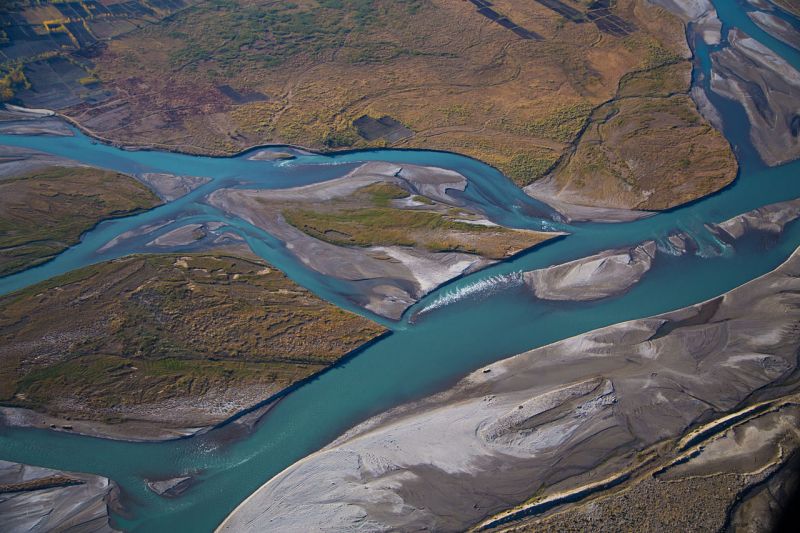Modeling the Kabul River Basin
Published on by Water Network Research, Official research team of The Water Network in Academic
Zhanay Sagintayev is one of the several scientists supported by USAID’s Partnerships for Enhanced Engagement in Research (PEER) program, which uses NASA’s satellite imagery data to identify floods, determine surface water coverage, and observe droughts across the Kabul River Basin.
The project began in late 2016.

Kabul river, Wikimedia Commons, Author: philmofresh
With this data, research teams expect they will be able to create combined surface and groundwater models that can be used by water managers in both Afghanistan and Pakistan to better predict floods, droughts and improve water management decisions that impact millions of people.
Sagintayev, who goes by Jay Sagin, is collaborating with researchers from both Afghanistan and Pakistan through his laboratory at Nazarbayev University in Astana, Kazakhstan. Central Asia has a history of positive relations with neighboring countries, including Afghanistan and Pakistan, and often hosts regional meetings.
The Government of Kazakhstan has also played a role in the economic development of Afghanistan by supporting programs that train Afghan professionals. “We have many similarities in our culture, food, traditions; it is easy to communicate with Afghan and Pakistani researchers. They are our neighbors. We have to be in good relationship with our neighbors. Their success and difficulties influence on our country, Kazakhstan,” says Sagin.
Scientists Speak the Same Language
The idea of science as a means of promoting cooperation is not new. Sharing scientific information has been critical to the success of the nearly 60-year-old Indus Waters Treaty between India and Pakistan. “It is ... easier to communicate among scientists as they technically speak the same language,” says Azeem Shah of the International Water Management Institute (IWMI) (link is external).
Based in Colombo, Sri Lanka, with offices in 11 countries across Africa and Asia, IWMI uses science and technology to address sustainable water and land use problems in partnership with governments, civil society and the private sector.
The Kabul River is critical to Afghanistan’s future energy independence and economic growth, and to Pakistan’s expansion of the power it provides to its citizens. The entire country of Afghanistan generates only 300 megawatts of electricity, or approximately 2 percent of the power generated by Pakistan. As a result, Afghanistan must import around two-thirds of its power from neighbors in Central Asia.
Projects currently under development promise to triple Afghanistan’s power generation, but also have the potential to reduce the availability of water downstream. A high demand for water resources on both sides of the border, combined with predicted reductions in water availability due to natural and manmade events necessitate the need to cooperate on sharing the river.
Along with the World Bank and the International Center for Integrated Mountain Development (link is external), IWMI supports the Indus Basin Knowledge Forum, a series of meetings that bring together government representatives and researchers from Afghanistan, China, India and Pakistan to share knowledge and foster cooperation.
Before working on the Kabul River, Shah’s research focused on broader water issues impacting India and Pakistan, so he understands the importance of information when it comes to transboundary cooperation. “I realized there is little scientific evidence available to determine how climate change will impact the flows of Kabul River along with the human interventions that are taking place .... This was the main motivation which prompted me to investigate this important issue,” says Shah.
Shah is creating hydrological and rainfall models of the Kabul River Basin to determine future water availability. In order to make accurate models, he needed a partner in Afghanistan to gather data.
In the beginning, he says, “It was quite a task to find people from Afghanistan with relevant expertise in the area of hydrology to contribute in this research project.”
But through IWMI’s engagement work in the region, he was eventually connected with Wasim Iqbal. Meeting Iqbal, an adviser to the Afghan Ministry of Energy and Water, was the key to building models that represent the whole Kabul River Basin. “We extended our willingness to engage him and thereafter it has been a great collaborative experience so far,” says Shah.
In addition to developing models, Shah is leading IWMI’s effort to create the Kabul River Basin Knowledge Platform, an online open source platform that will serve as a single source of knowledge for any scientific material that is available on the Kabul River Basin.
With this tool, researchers from both Afghanistan and Pakistan will be able to collaborate and share information, slowly breaking down barriers that can help build a platform for broader confidence-building discussions between countries in the region, including measures toward lasting political cooperation.
Read full article: US Aid
Media
Taxonomy
- Water Resource Mapping
- Hydrology
- Hydrography
- River Studies
- Sustainable Water Resource Management
- Natural Resource Management
- River Engineering
- River Basin management
- River Restoration
- Hydrology
- River Engineering